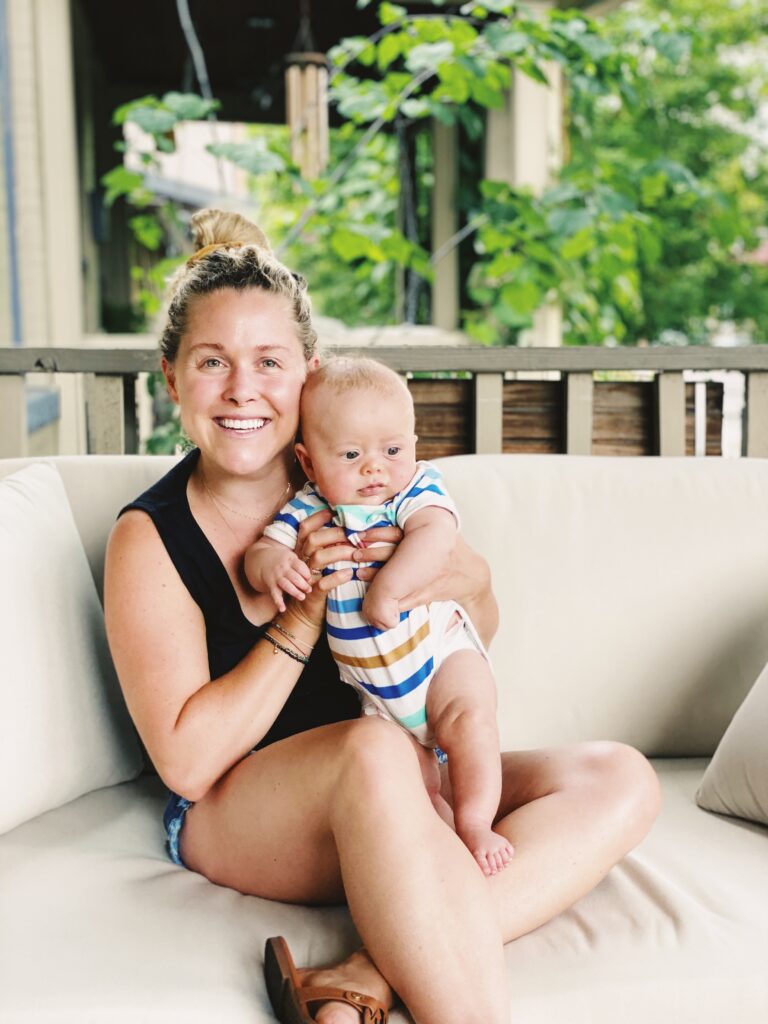Whether you’re settling into newborn life—or you’re nearing the end of your pregnancy—congratulations! Let’s chat about feeding your baby. In honor of World Breastfeeding Week, today’s article is all about breastfeeding. As a woman who nursed for over 13 months, there’s something incredibly tender, innate, and connective about breastfeeding. The bond is sweet and palpable in a way no other experience is. I often refer to it as a privilege—an honor—to breastfeed. After a rocky start (and a few bouts of mastitis), my son and I found a wonderful rhythm. Never the less, it was exhausting. On top of everything else that motherhood entails, breastfeeding is a full-time job. But remember: as mothers, we were designed to nourish in this way.
If you’ve chosen to formula-feed your baby—or do a combination of nursing / pumping and formula—rest assured you’ve made the right decision for you and your little one. All mothers, at some point, make a choice about whether to breastfeed or formula-feed their infant. Marital status, education, age, culture, and circumstances all affect this decision. At the end of the day, you have to do what is most optimal for you and your family.

my breastfeeding journey
Breastfeeding was a steep learning curve—one I wasn’t fully prepared for (truthfully, is any new mother fully prepared for it?). In the very beginning, the onslaught of physical discomfort was enough to consider an entirely different feeding path. Thankfully, these and this really helped. As did my lactation consultant. It took a month or so, but breastfeeding got easier. We found our groove. I had supply issues to start, but I increased my supply by consuming more complex carbs and healthy fats, adding this mix to my water, and nursing frequently.
Shortly following the newborn stage, my son stopped cluster feeding. Nursing sessions also became more efficient. In the beginning, I mostly fed on demand, but I implemented a tighter schedule around three months. I opted for a combination of nursing and pumping (we started giving him a bottle of pumped milk once he was about one month old). As a whole, my entire breastfeeding experience was beautiful and humbling. That said, I wound up with three rounds of mastitis during my nursing journey. If you know, you know. I needed antibiotics for one round but these helped the other times.

WHAT IS AN INFANT’S MAIN SOURCE OF NUTRITION?
Just like adults, babies require certain nutrients to thrive. That said, it’s pretty easy to provide those nutrients! Particularly, once you learn what they are. In the beginning, babies get all the nutrients they need from breast milk and / or formula. And, these liquids will continue to be your baby’s main source of nutrition through the first 12 months. Gradually, you’ll serve more and more nutrients in the form of solids. When the time comes, here are signs your baby is ready for solids!

BREASTFEEDING, BY THE NUMBERS
In honor of World Breastfeeding Week, it’s worth mentioning that while approximately 83% of U.S. infants are breastfed at birth, only 25% are still exclusively nursed by the time they’re six months old. More on that here. Sure, that decrease isn’t terribly surprising, but much of it is a symptom of unequal access to breastfeeding support, combined with persistent racial and ethnic disparities in breastfeeding. This, in part, was one of the reasons I went back to school to support postpartum women! From one mama to another, we have to do better. We can do better.
WHY ARE BREASTFEEDING RATES DECREASING?
Unfortunately, for many reasons. Think: systemic racism and cultural factors. For example, studies show that Black women get less lactation support compared to other new moms, and are more likely to have to return to a job with inflexible hours shortly after birth. That could make breastfeeding inaccessible (not that it was easy to begin with). But organizations like BMBFA are working to break down these barriers by creating supportive communities, providing training, and raising awareness around the benefits of nursing with summits, conferences, and more.

BENEFITS OF BREASTFEEDING
The list is endless. When it comes to everything to know as a breastfeeding mom, it’s helpful to know why it’s so beneficial. Most importantly, breastfeeding can help protect babies against some illnesses and diseases (short-term and long-term). For example, breastfed babies have a lower risk of asthma, obesity, type 1 diabetes, and sudden infant death syndrome (SIDS). Breastfed babies are also less likely to have ear infections and stomach bugs.
There are benefits for breastfeeding moms, too: a lower risk of ovarian cancer, breast cancer, diabetes, and high blood pressure. But, breastfeeding isn’t a fit for everyone. For example, moms who work hourly jobs, have other career ambitions, or have a livelihood that makes it too difficult. Furthermore, women on specific medications—or ones dealing with a condition like PCOS—opt not to breastfeed. That said, I successfully breastfed despite my PCOS diagnosis!
WHAT IF BREASTFEEDING DOESN’T WORK OUT?
You are still a worthy, incredible mother. Every breastfeeder has her own challenges, and every child is different. Due to mental or physical strain, moms simply opt not to do it. Enter: formula. Formula is a drink made for infants that’s either ready to use, or comes from water mixed with concentrated liquid or powder. Formula’s typically made from cow’s milk protein, but can also come from soy, protein hydrolysate, or other specialized ingredients. Because many U.S. formulas contain a slew of unnecessary ingredients, opt for European baby formula. My top recommended choice? Bobbie.

What are the recommended breastfeeding guidelines?
Last year, the American Academy of Pediatrics (AAP) updated their recommendation. The new AAP guidance is an update from 2012, which recommended continued breastfeeding for up to one year or longer.
Updated AAP guidance continues to recommend exclusive breastfeeding for six months, with complementary foods introduced around six months. Under the new policy, the AAP now supports continued breastfeeding until two years or beyond, as mutually desired by mother and child.
This recommendation is consistent with those of the American Academy of Family Physicians and Canadian Paediatric Society. It’s also in alignment with Oh Baby School of Holistic Nutrition, where I received my credentials as a CNC.

World breastfeeding week: August 1-7, 2o23
What is the mission behind World Breastfeeding Week? The purpose of world breastfeeding week is to inform, support, engage, galvanize, and uplift. Through education, tools, and resources, world breastfeeding week aims to strengthen the chain of support for breastfeeding. It’s also an opportunity to emphasize how vital breastfeeding is for nutrition and food security. There is strength in numbers, so don’t be shy to share your breastfeeding journey with friends, family, and on social media. You can use hashtags like #WBW2023 #worldbreastfeedingweek2023 #buildingbackbetter to show your support.
This article contains affiliate links. Thank you for supporting Wellness with Edie. This article is for informational purposes only. It is not, nor is it intended to be, a substitute for professional medical advice, diagnosis, or treatment and we recommend that you always consult with your healthcare provider.



Leave a Reply